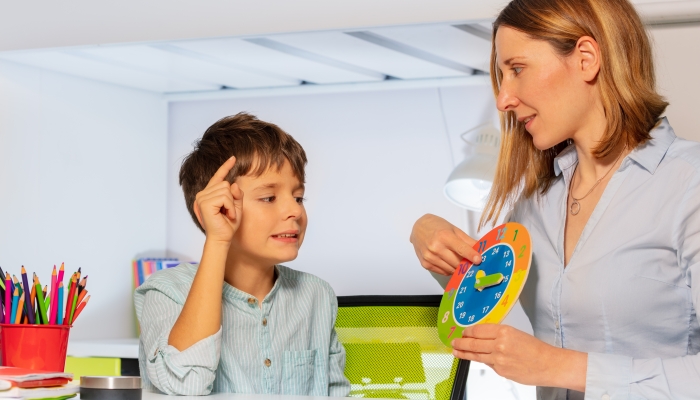Sensory Meltdown Survival Guide for Parents

- Sensory meltdowns can often appear as temper tantrums, but they’re not the same. Both the cause and treatment are drastically different.
- All kids process sensory input differently. For kids with sensory processing disorder, a stimulus can feel overwhelming and elicit a neurological response. This is out of their control.
- There are many remedies to handle your child’s sensory meltdown. They vary based on the environment and the type of sensitivities your child experiences.
- Prevention is a big part of dealing with sensory meltdowns. Planning and practicing coping techniques can lessen the severity of meltdowns and sometimes prevent them.
All parents know the horror of having their young child scream and cry in public. But if this kind of behavior happens frequently, you may begin to wonder if your child is having a normal temper tantrum or something else altogether.
There’s a possibility that your child isn’t having a temper tantrum at all but a sensory meltdown. While these can look similar at times, the causes are completely different. And that means how you respond to a sensory meltdown should be different, too.
If you’re concerned about your child’s behavior, you’ll need to pay close attention to determine if a sensory overload is the cause. Fortunately, if that’s the case, there are ways to prevent and respond to sensory meltdowns that will help you get through it in one piece.
What Is a Sensory Meltdown?
Sensory meltdowns are a reaction to a sensory overload that causes a freeze, fight, or flight response. They’re commonly mistaken for a temper tantrum, but both the cause and the remedy for them couldn’t be more different.
Sensory issues may include sensitivity to light, smell, heat, sound, taste, or touch. Your child could be sensitive to one or all of these types of stimuli. Underlying feelings of anxiety and stress can make the meltdown worse.
A sensory meltdown happens when your child’s brain is maxed out on sensations. Without techniques to cope with this overload of a sensation, your child starts to shut down.
Now, you may be wondering why some kids have sensory meltdowns and others don’t. Don’t all kids experience the same sensations?
The answer is that all of us experience sensations differently. Some kids feel stimulation very intensely. Children that struggle with processing sensory information feel stimulation to the point that it’s overwhelming and deeply unpleasant.
While some kids can filter their sensory input, others cannot. It’s not your child’s fault and sensory meltdowns are entirely out of their control.
Kids that struggle with sensory processing are often diagnosed with special needs, such as autism or ADHD. It’s important to note that not all kids get this diagnosis, and kids without special needs can still have sensory issues and meltdowns.

What Does a Sensory Meltdown Look Like?
There’s no one way a sensory meltdown looks or feels like. Your child will react differently to different stimuli on different occasions. No two meltdowns will be the same, even with the same child.
The behavior you see from your child is the fight or flight response to the triggering sensory information they receive.
Behaviors you might see in a sensory meltdown include:
- Screaming and crying
- Hitting himself and others
- Pushing or kicking
- Biting or spitting
- Running away
- Hiding
- Avoiding eye contact
- Covering his eyes or ears
- Freezing, not speaking or moving
These behaviors, while undesirable and sometimes unsafe, are just your child’s attempts at coping with an experience.
Common Causes of a Sensory Meltdown:
- Loud, sudden noises
- Bright, flashing lights
- Smells, such as air fresheners or foul odors
- Movement, like spinning, riding in a car, swinging, being lifted
- Touch, textures of clothing, getting bumped into repeatedly
- Clumsiness, feeling dizzy, or falling
What Does a Sensory Meltdown Feel Like?
Sensory overstimulation can make your child feel confused, upset, and even like they’re in pain. This can cause frequent meltdowns in children who struggle intensely with a sensory processing disorder.
Your child’s reaction to this feeling may result in behavior that parents dislike and feel concerned about. Often when these meltdowns happen in public, they can be viewed as a temper tantrum, which makes parents feel embarrassed and judged.
How Is a Sensory Meltdown Different Than a Tantrum?
All kids experience temper tantrums. They’re a reaction to not getting their way and some kids, especially strong-willed children, have more than others. Unlike tantrums, many kids will never experience a sensory meltdown.
Here are the main differences between a tantrum and sensory meltdown:
- Tantrums are intentional. They are intended to get a desired result.
- Your child will stop a tantrum if they get what they want. You will not have the same result with a sensory meltdown. Your child cannot simply stop a sensory meltdown because you gave them what they want.
- Temper tantrums are often an aggression response to gain a caregiver’s attention, whereas children experiencing a sensory meltdown want to avoid attention.
Signs Your Child Is Having a Sensory Meltdown and Not a Tantrum
They aren’t trying to get something. If you’re questioning whether your child is experiencing a temper tantrum or a meltdown, ask yourself: are they trying to get a specific result from their actions? In a sensory meltdown, the answer is always no.
When your child is in the midst of a sensory meltdown, you can’t communicate with them. It’s not about self-control or good parenting skills. Amid a fight or flight response, your child is virtually unreachable.
What Causes Sensory Meltdowns?
Contributing factors that cause or intensify sensory meltdowns:
- Changes in routine, such as a new home, a sibling, school, or a caregiver
- Experiencing sensory processing challenges
- Having limited communication skills
- Sensory overload, or a lack of proper sensory stimuli
- Poor quality sleep
- Low-quality diet, not eating often enough, or dehydration

How Should You Respond When Your Child Is Having a Sensory Meltdown
Remind yourself that your child is having a neurological response. It’s out of his control. It’s so important that parents calm themselves and block out the embarrassment of fear of judgment from others. Take a deep breath and relax.
When your child’s in a fight or flight reaction, the part of their brain that processes language shuts down. You can’t talk your way out of this situation, and often talking too much can trigger meltdowns, aggravating the sensation of overstimulation.
Instead, try the following strategies to help your child during a sensory meltdown:
- In a calm, soothing voice, repeat a short phrase like “deep breaths” and demonstrate deep belly breathing.
- Take your child out of the overstimulating environment to somewhere quiet. Crowded places are overwhelming for the most well-adjusted, mature adults. Remove triggers from their environment, and your child will naturally start to calm her nervous system.
- If you aren’t sure of the trigger, get them to a calm, quiet space without strong stimuli like loud sounds or bright light.
- Focus on your child’s breathing to help regulate her nervous system. Have her blow out imaginary birthday cake candles (there are fun apps for this) or blow bubbles. You can also have your child place one hand on her chest and one on her belly and feel the breath filling up her belly and emptying.
- Create a sensory safe space for your child to retreat to at home. A quiet place with comfy pillows, their favorite snuggly toy, soft music, a weighted blanket, fidget toys, low lighting, and noise canceling headphones can offer relief and keep your child calm at home. Indoor cocoon swings are wonderfully soothing, too. If you have a nice outdoor space available, you could even create a sensory garden.
- Establish an anti-anxiety routine with your child. Practice it with your child when they are calm and open to learning the techniques, like breathing exercises, so they will be accessible during a stressful situation.
- Many children benefit from being held tightly during sensory meltdowns. Some respond favorably to slow rocking. Other kids may find this to be too much touch sensory input, so proceed with caution and read their reactions carefully.
Preventing Sensory Meltdowns
Sensory meltdowns can seemingly come out of nowhere. However, there are many techniques you can try to reduce their frequency and intensity.
- Make sure your child eats healthy snacks frequently to keep blood sugar levels stable throughout the day. Encourage him to drink often and stay well-hydrated.
- Make sure he is getting enough sleep. Being overly tired is a fast track to a sensory meltdown. Learn to prevent bedtime tantrums and other sleep issues that may be disrupting your child’s sleep.
- Identify your child’s biggest sensory triggers. Plan ahead, for example, to bring noise-canceling headphones with you if you know your child will be around loud noises. A hat or sunglasses can help lessen the severity of bright lights.
- Keep a log of your child’s triggers. This habit will provide a lot of information that you can use to mitigate them in the future.
- Have your child engage in enjoyable sensory stimuli activities regularly. Choose activities that will give him input for all sensory systems. Carry small fidget toys or sensory balls with you if you are out of the house.
- Maintain a structured daily routine. Children thrive on routine. Alert your child ahead of time when there’s a change to the schedule that may be triggering.
- Give your child a warning before significant transitions in the day. Transition times are often a big trigger for meltdowns, so give your child ample warnings.
For example, a crowded store can often be a trigger, but it’s unavoidable in our daily lives. It may help to bring a comfort item, or sensory blockers like headphones or glasses with you to the store.
- Discuss emotional vocabulary often with your child, so they can express how they feel.
- Teach techniques for self-soothing and regulation. An anti-anxiety routine that you practice with your child ahead of time will help you tremendously to raise a sensory smart child.
Exploring Desensitization Techniques
Finally, there is the option to pursue desensitization techniques. A child’s sensory processing can increase for touch, movement, and even smells.
Desensitization involves small, incremental actions towards helping your child learn to tolerate certain stimulations, resulting in a higher tolerance for those sensations without triggering a meltdown. Decreasing their sensitivities to specific activities takes time and effort but is worth it in the long run.
You may want to consult with your child’s pediatrician or an occupational therapist for guidance when pursuing desensitization techniques, as well as coping and prevention tactics.

Related Posts

Autism
Developing Time Management Skills in Children with Autism: 7 Tips
Learn how you can use structure and visual aids to help your child with autism learn time management skills.

Autism
Occupational Therapy for Children with Autism: How It Can Make a Difference
Children with autism face challenges in many different areas. Occupational therapy can help children address these difficulties while having fun!

Behavior
Understanding Intermittent Explosive Disorder in Children
Are you worried about your child’s unexpected aggression and explosive behaviors? Learn how to support a child with intermittent explosive disorder.